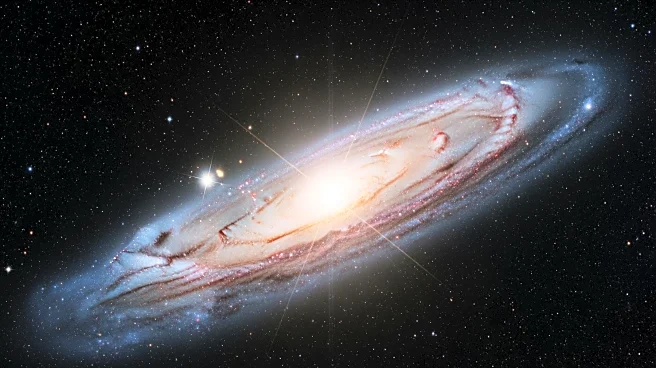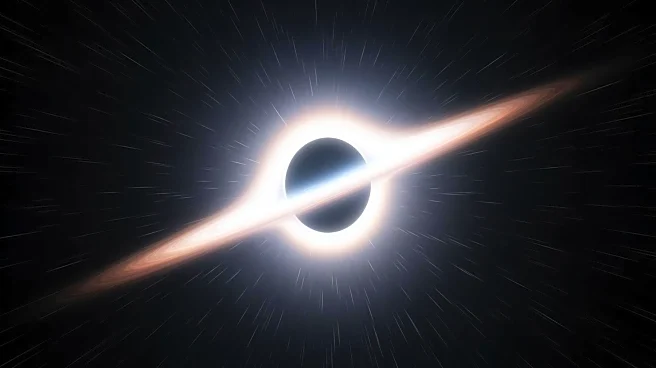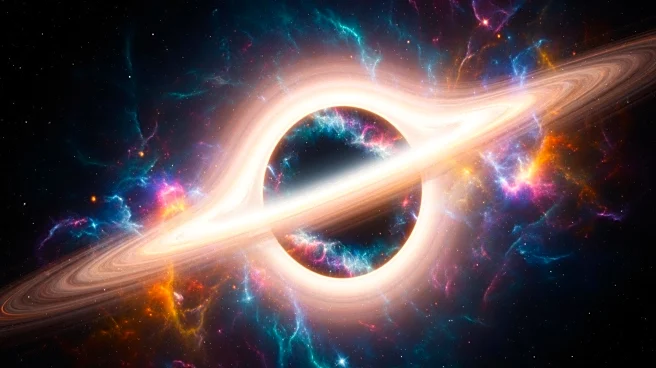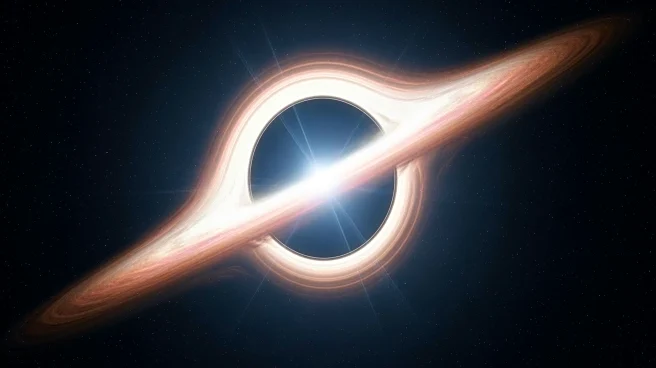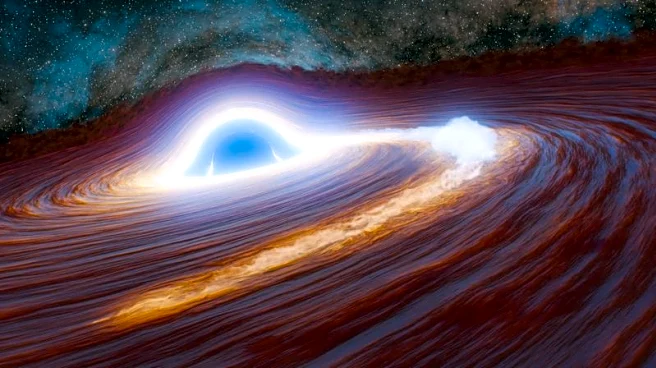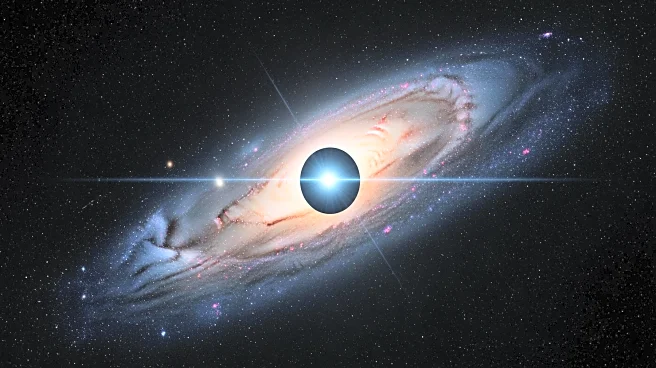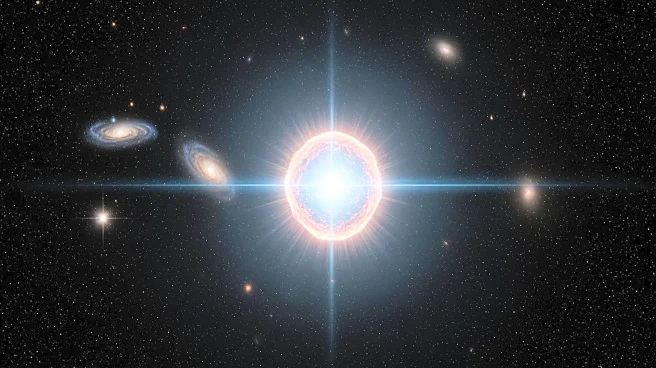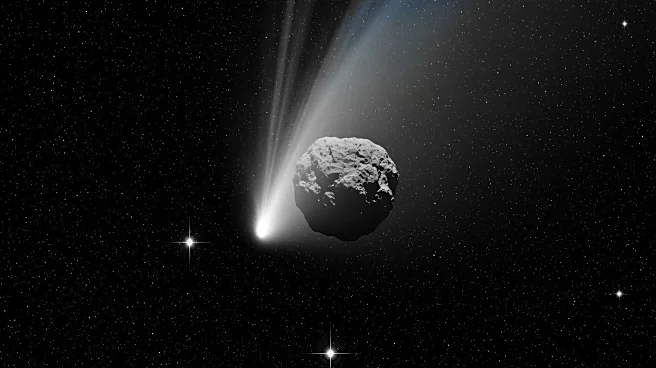What's Happening?
A supermassive black hole, located 10 billion light-years away in the galaxy J2245+3743, has been observed consuming a star estimated to be 30 times the mass of the sun. This event, known as a black hole flare,
is the largest and most distant ever recorded, producing a flare with the light equivalent of 10 trillion suns. The flare was first detected in 2018 and has been ongoing for over seven years. The black hole itself is estimated to be 500 million times the mass of the sun. The event was initially registered as a particularly bright object during a sky survey using ground-based telescopes, but its significance was only realized in 2023 when astronomers revisited the data.
Why It's Important?
This discovery provides significant insights into the behavior and evolution of supermassive black holes, challenging previous notions that these cosmic entities are relatively static. The event highlights the dynamic environments around black holes and their potential to produce massive energy outbursts. Understanding such phenomena is crucial for astronomers as it helps refine models of galaxy formation and evolution. The flare's intensity and duration offer a unique opportunity to study the interactions between black holes and their surrounding matter, potentially leading to new discoveries about the universe's structure and history.
What's Next?
The flare is expected to continue fading, but it will likely remain observable with ground-based telescopes for several more years. Researchers plan to conduct follow-up studies to confirm their findings and further explore the dynamics of the black hole and its environment. The ongoing observation of this event will contribute to a deeper understanding of tidal disruption events and the role of supermassive black holes in the cosmos. Additionally, the findings may prompt further investigations into other similar cosmic events, potentially uncovering more about the universe's hidden phenomena.
